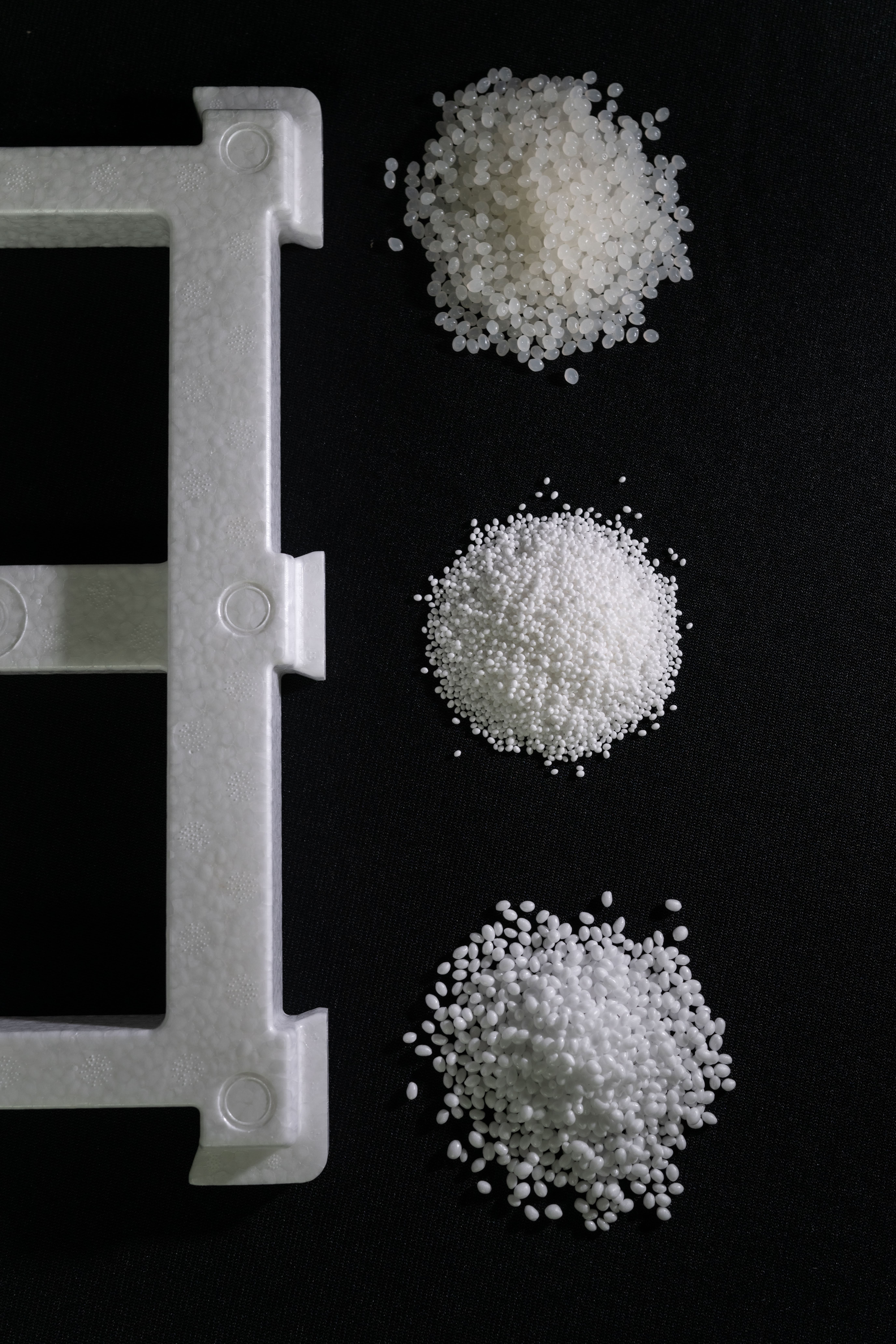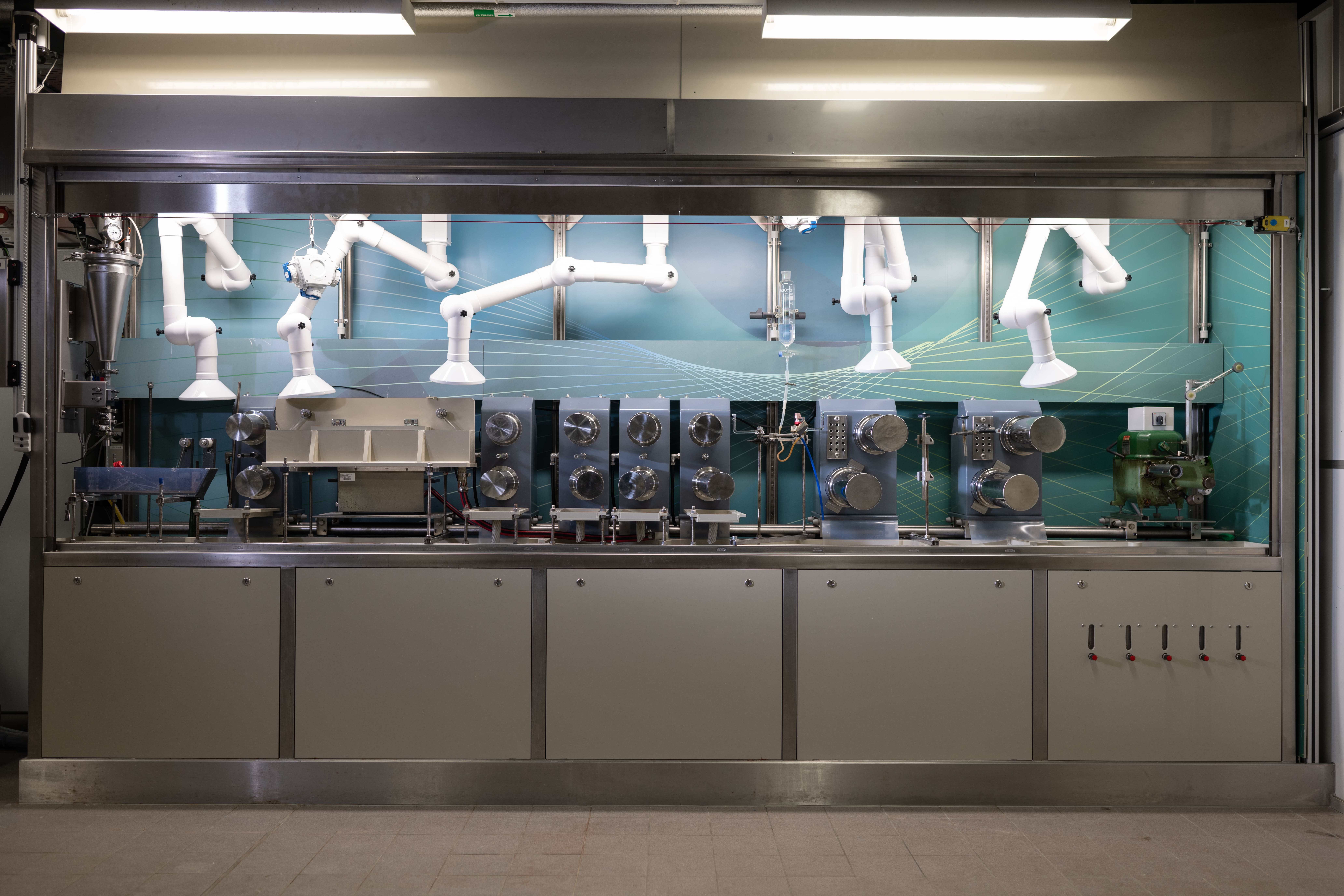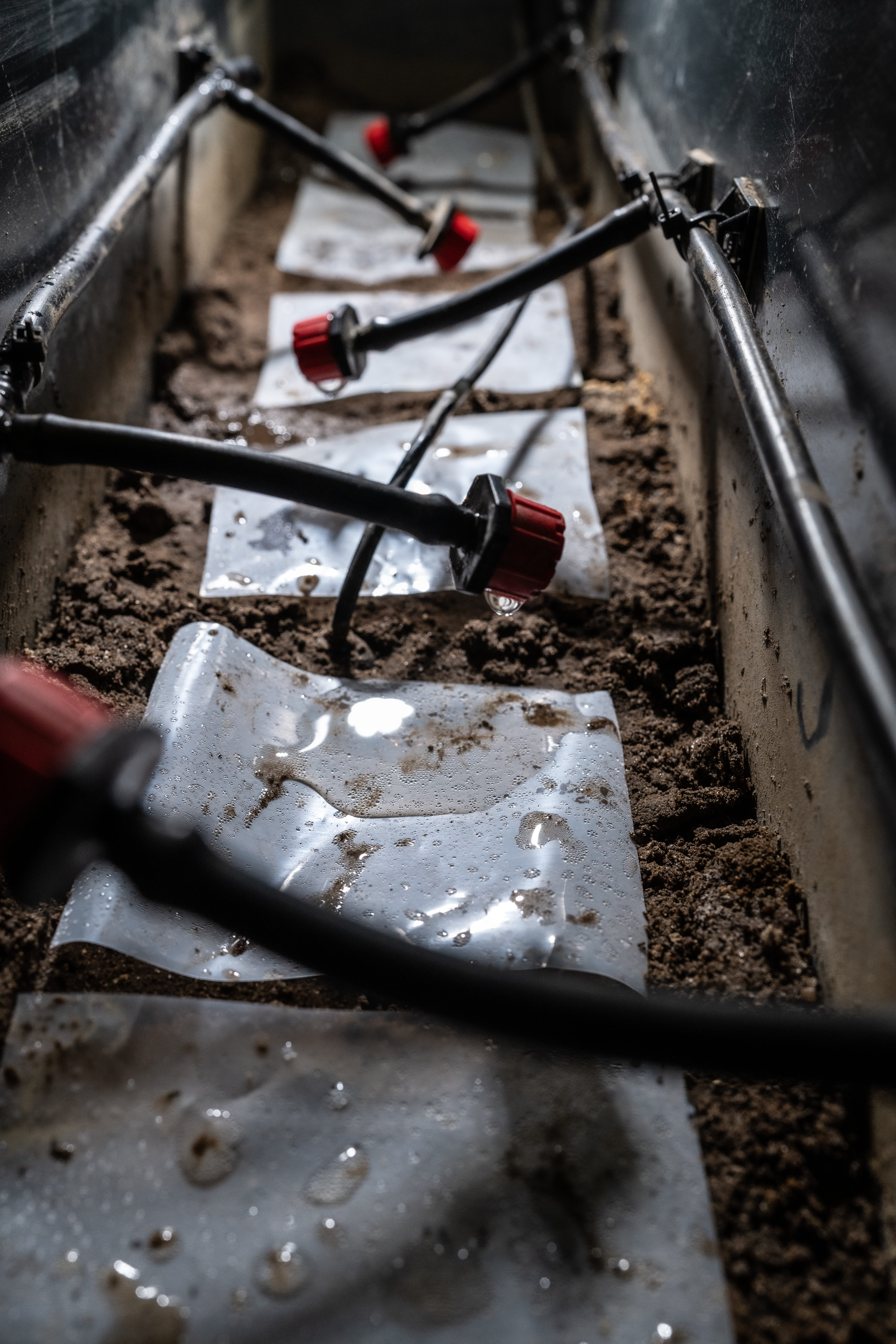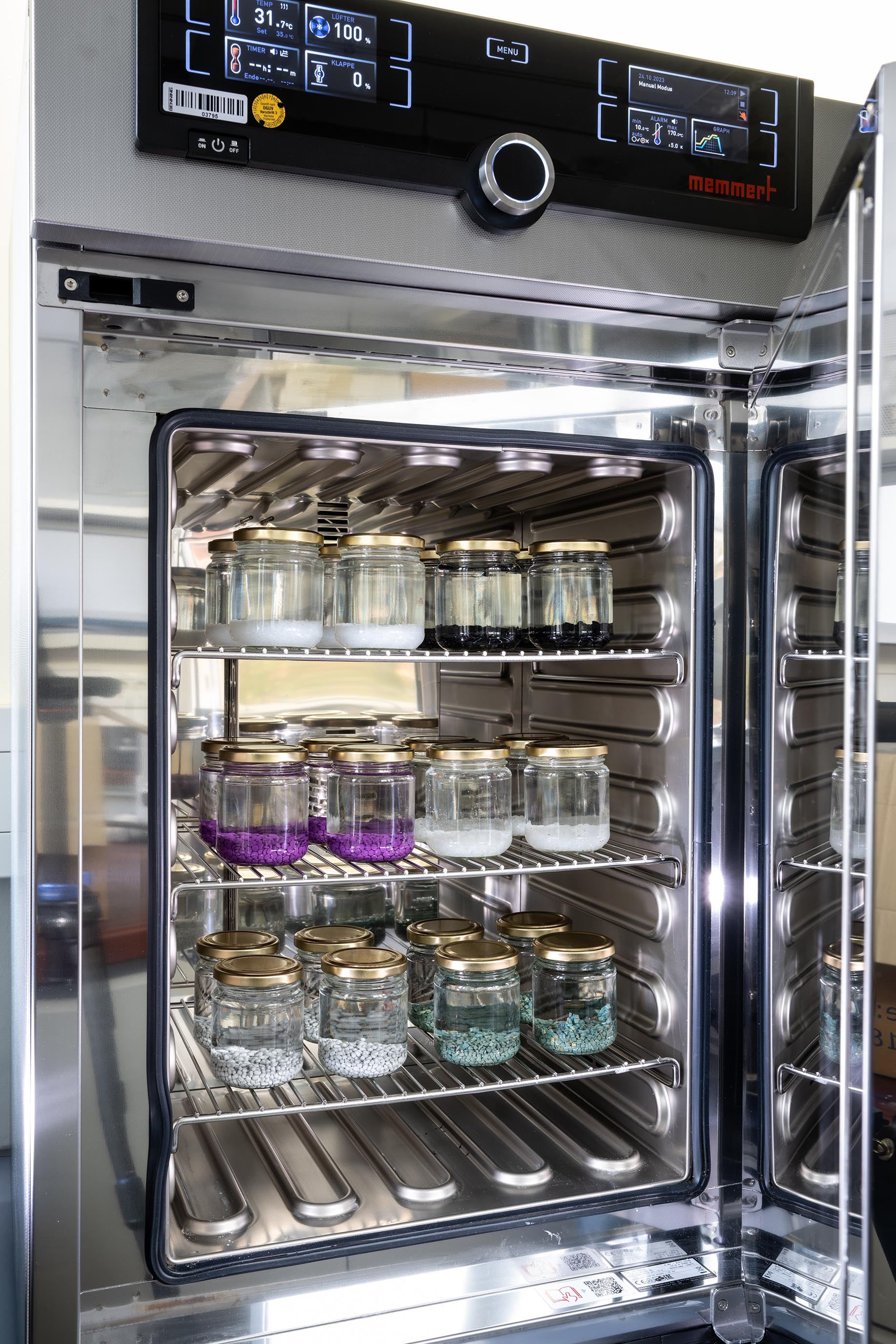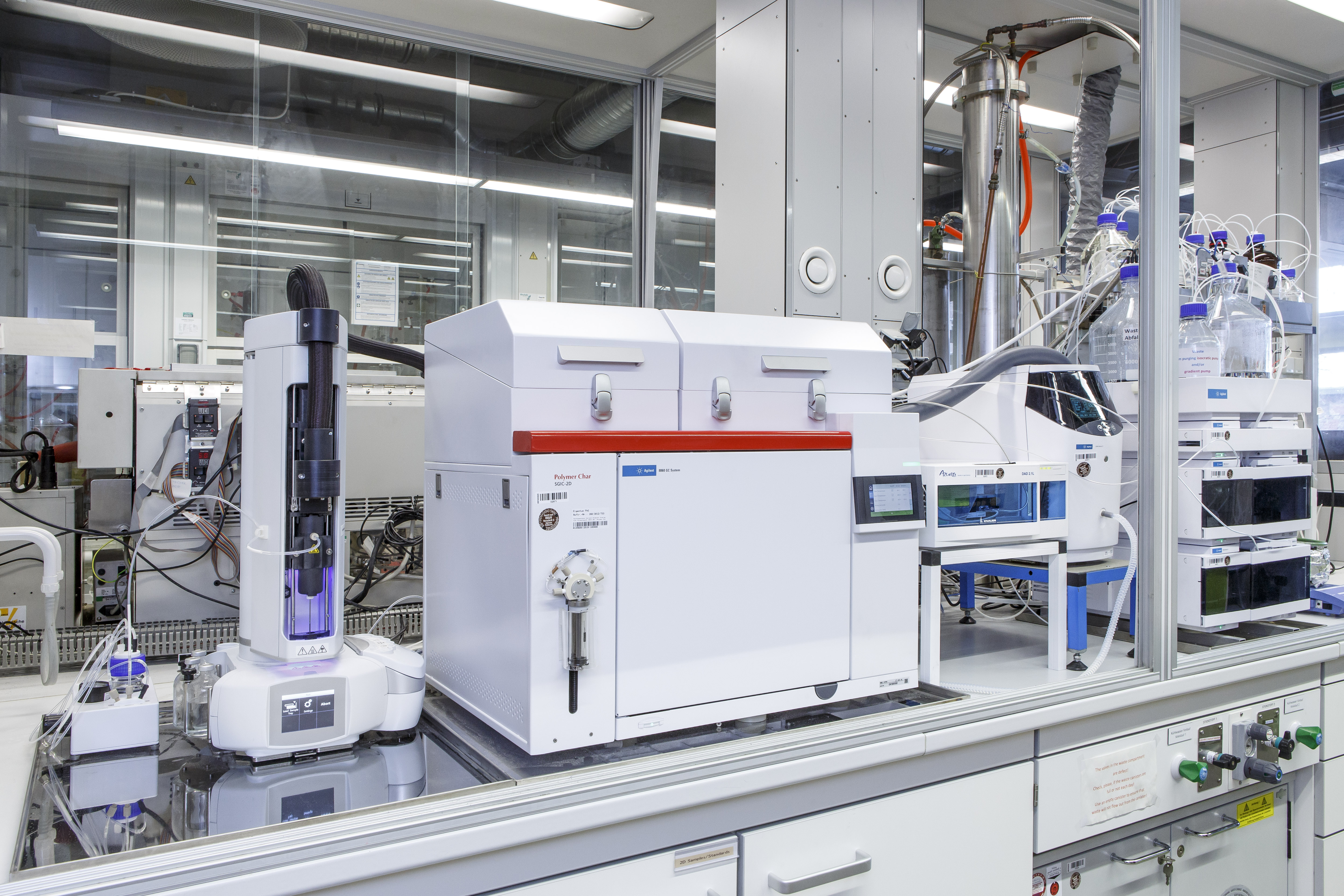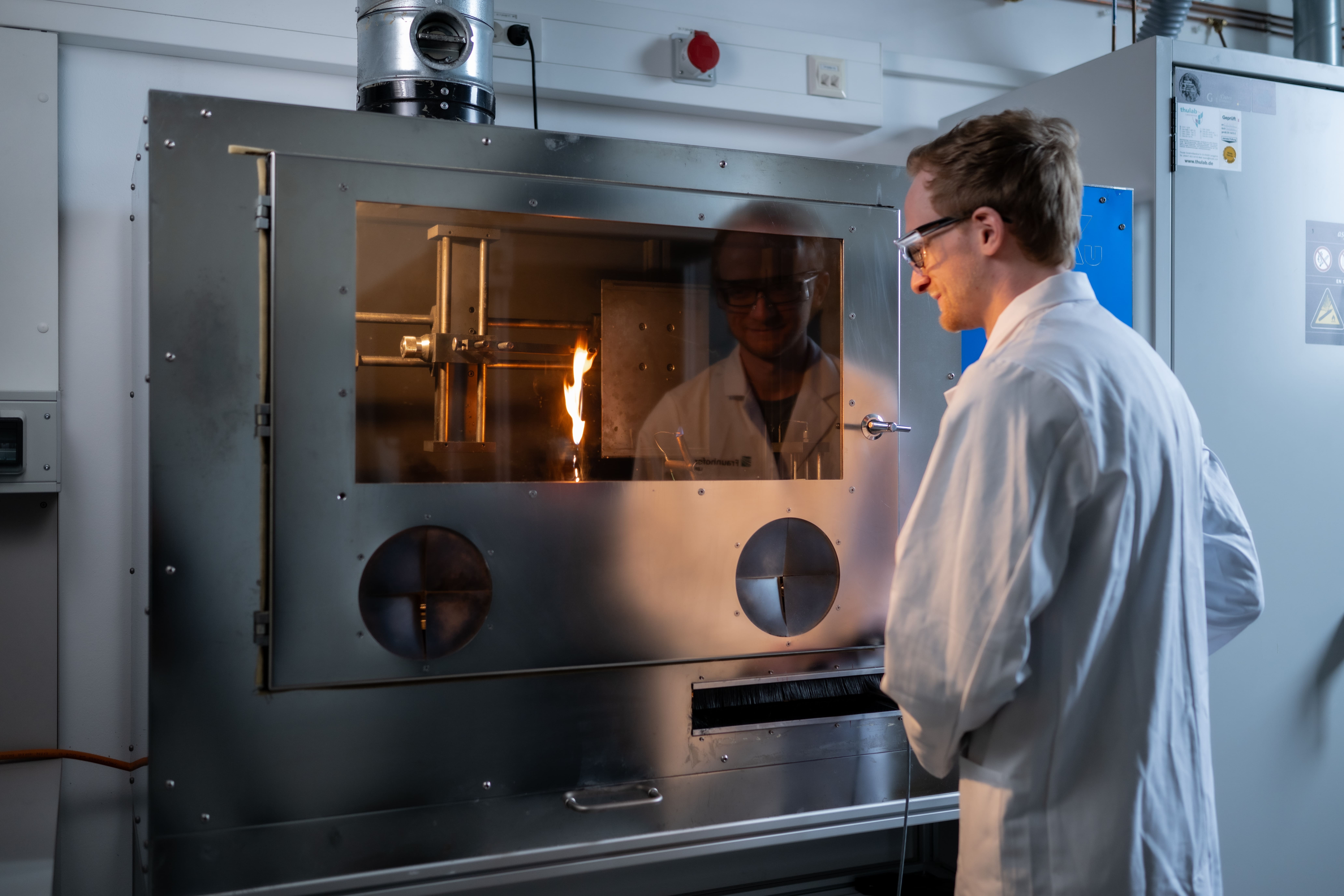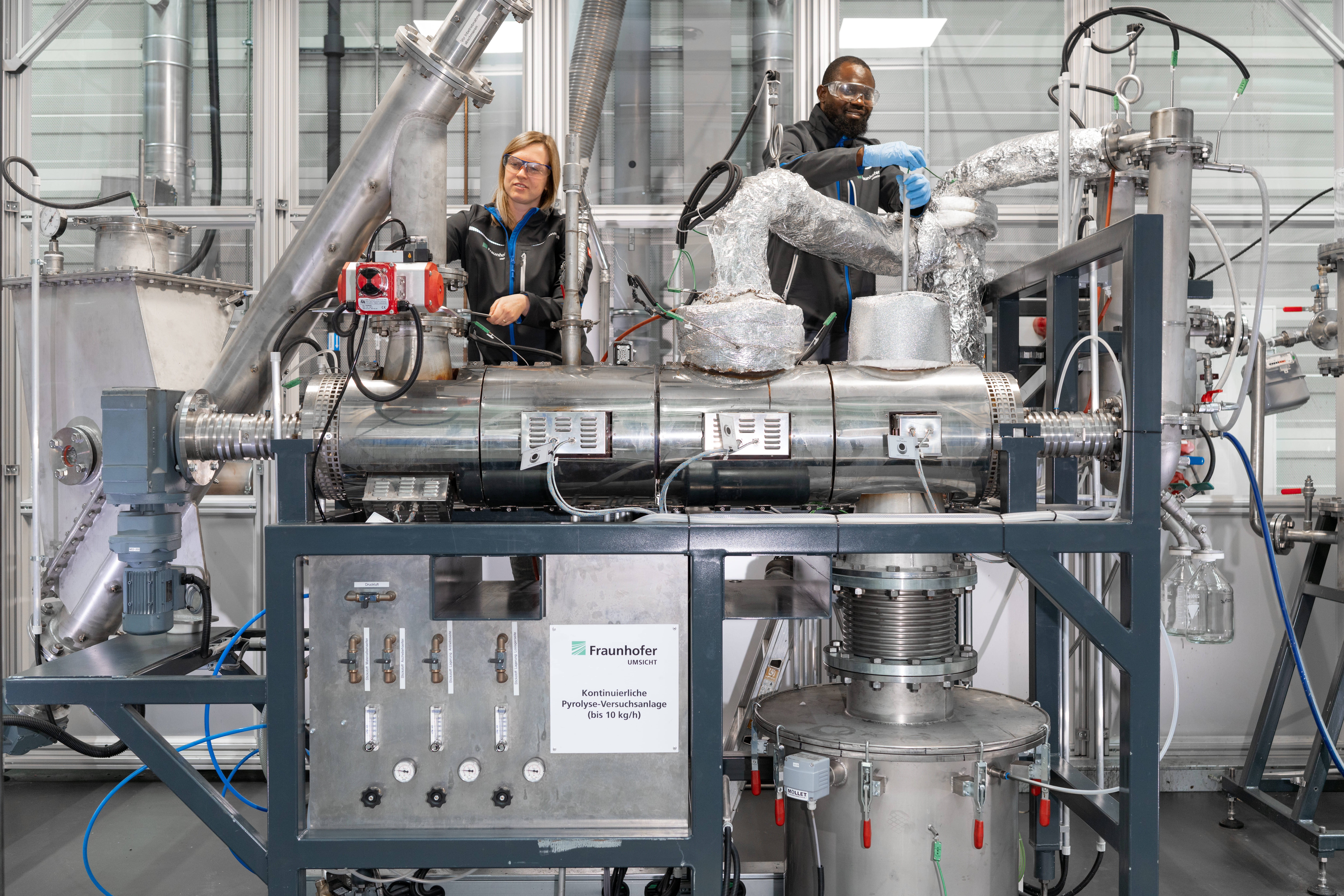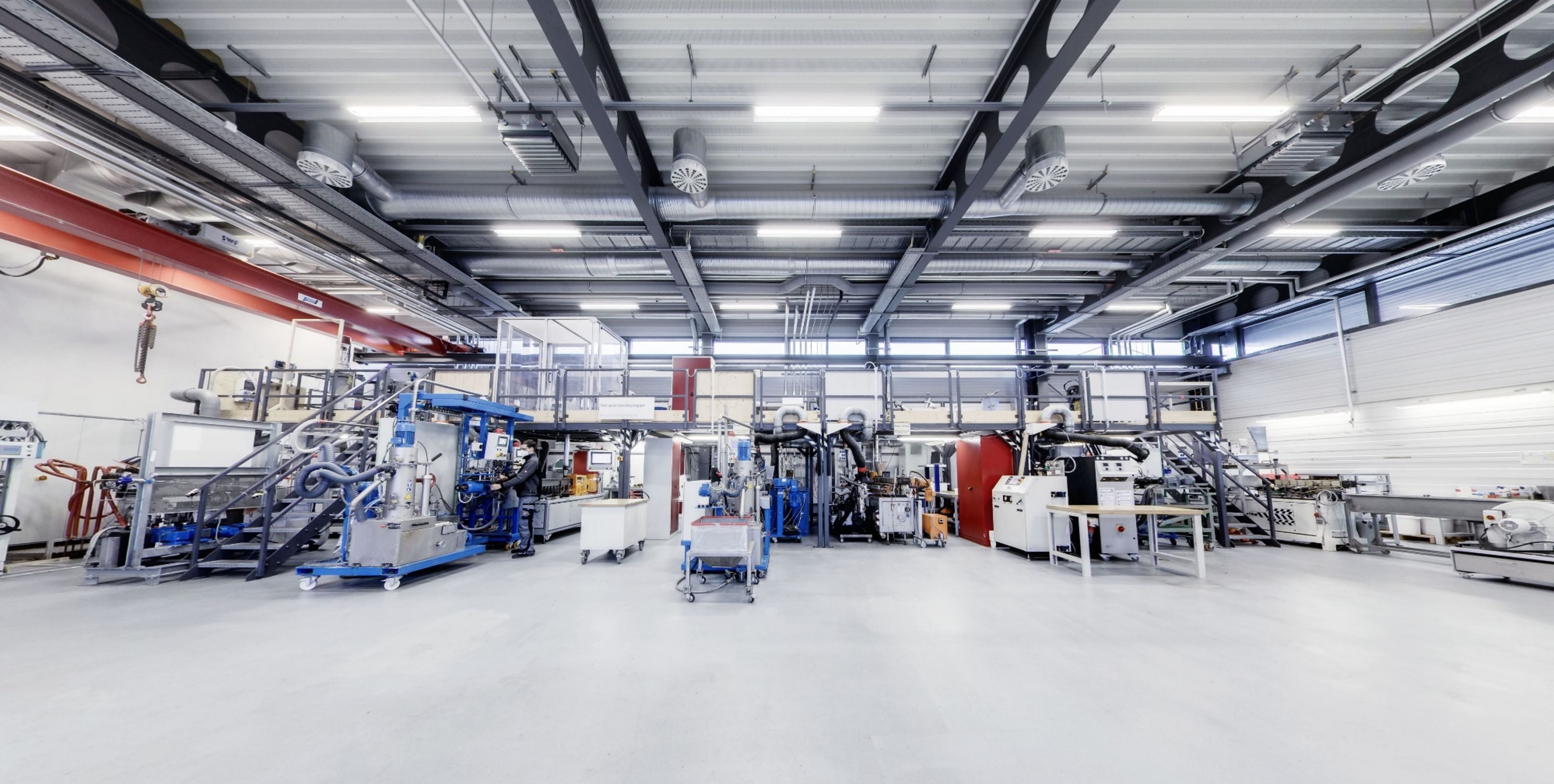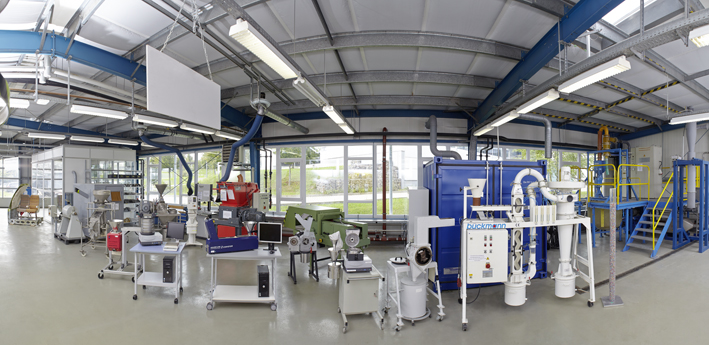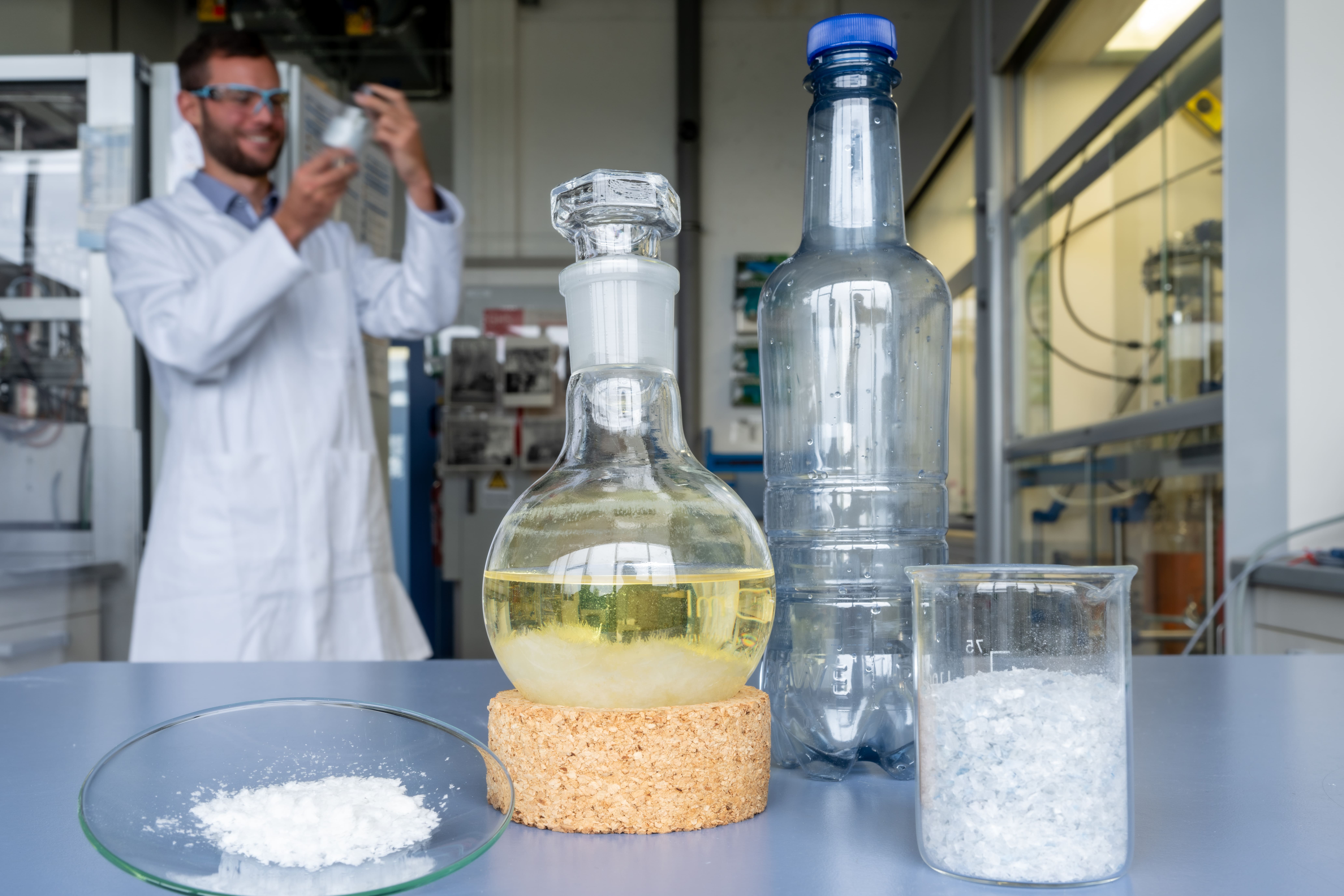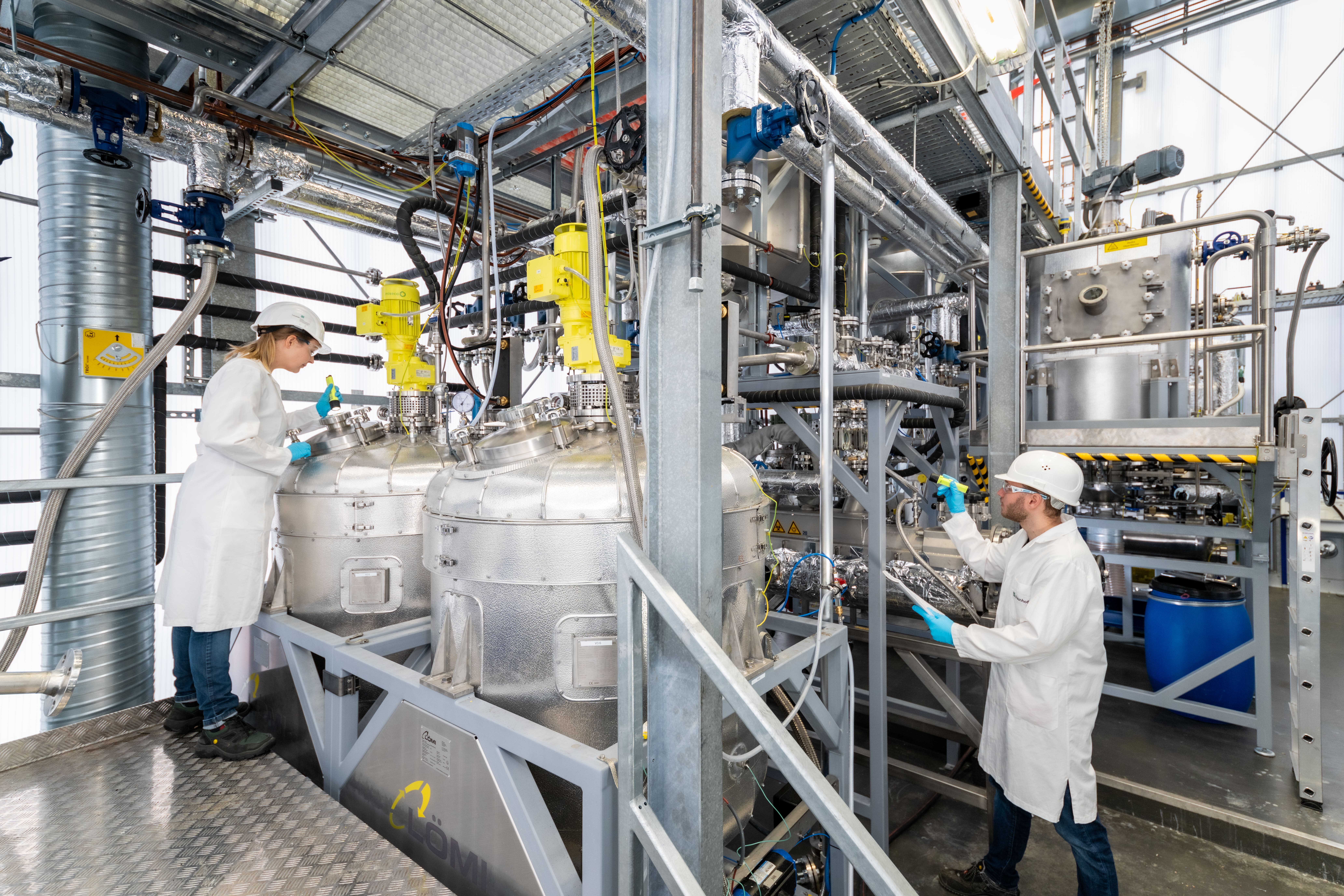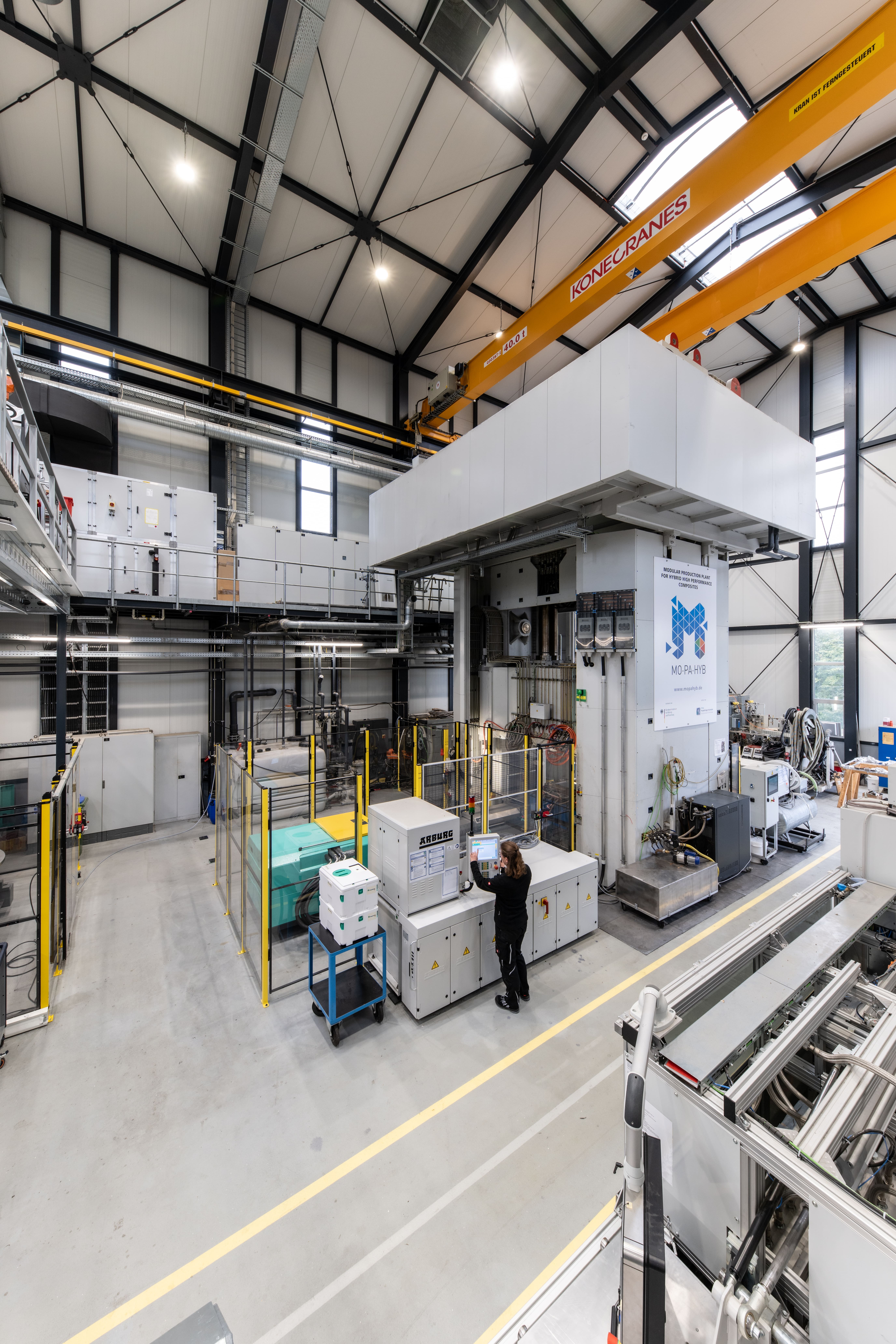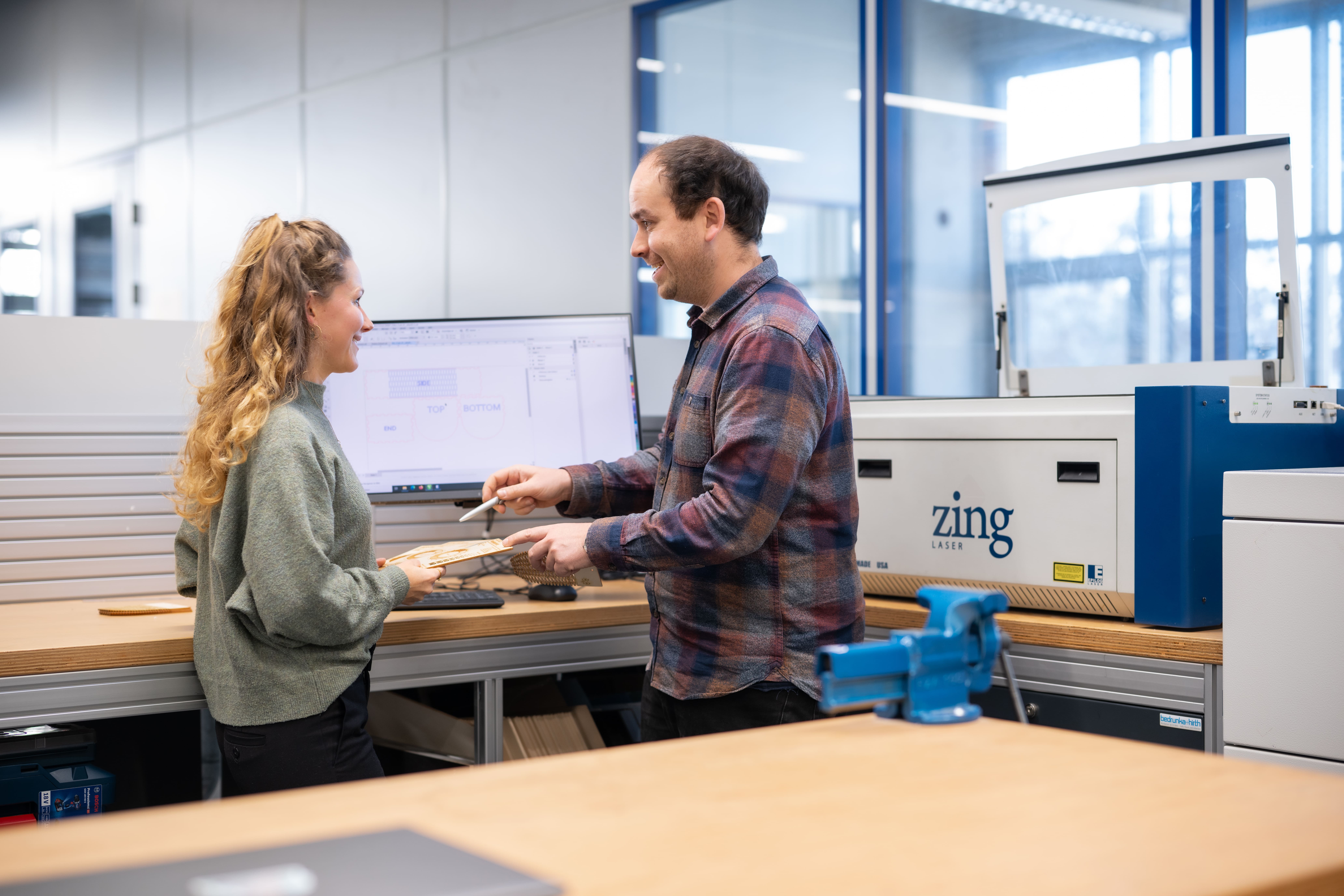Pilot plant for PLA production from lactic acid
Possible production quantities are: lactide up to 10 kg, PLA and other polymers in batches up to 5 kg, continuous PLA in twin-screw extruder up to 10 kg, polymer dispersions up to 20 kg.
- 25 L enamel full-view vessel with distillation peripherals, up to 200 °C, -1 to 0.5 bar
- 12 L stainless steel reactor with distillation peripherals, up to 300 °C, -1 to 10 bar
- Fractionating column with 30 theoretical plates, max. 250 °C, 10 L feed vessel
- Melt crystallization, 1.5 L and 7.5 L batch vessels
- 1 L, 1.5 L and 7.5 L stainless steel polycondensation vessels, up to 300 °C, -1 to 60 or 25 bar, torques up to 3,000 Ncm, digital data acquisition
- 12 mm twin-screw extruder 36 D, throughput 0.1 - 2 kg/h, up to 400 °C, 8 heating zones, 3 degassing or dosing openings
- Strand pelletizing
